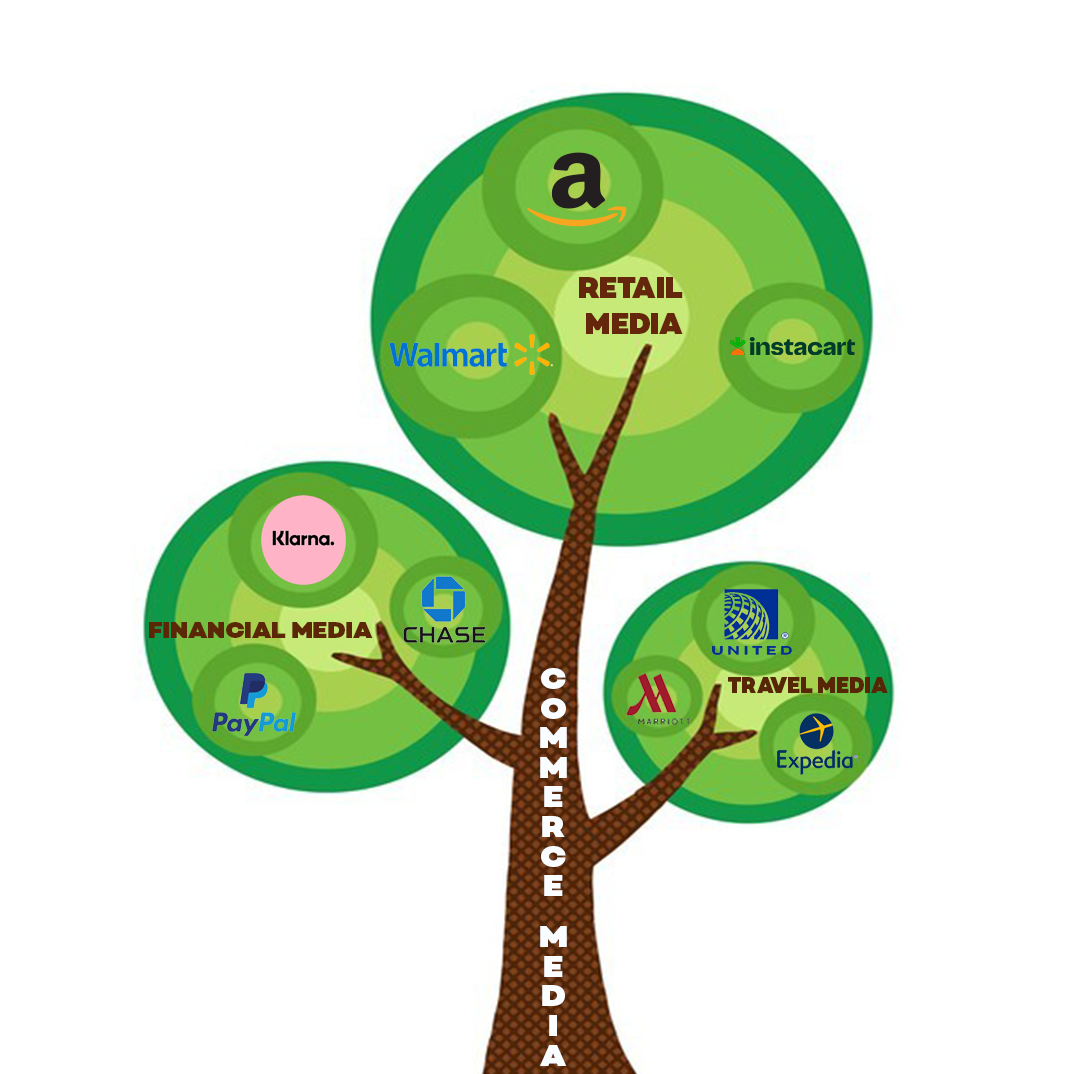October 29, 2024
What is Commerce Media? Understanding the Differences Between Commerce Media and Retail Media
Digital advertising has introduced a variety of new terms in recent years, and one comparison that often causes confusion is commerce media vs. retail media. Although they’re sometimes used interchangeably, these two concepts are not identical. So, what is commerce media, and how does it stand apart from retail media? Let’s dive into each term and highlight the nuances that make them unique.
What is Commerce Media? The Umbrella Term
To understand what commerce media is, think of it as a broad category encompassing advertising strategies that use purchase-based, first-party data. Commerce media enables brands to deliver targeted advertising based on real customer behaviors, such as purchasing patterns, preferences, and even timing. The foundation of commerce media relies on insights from companies whose core business isn’t media – including retailers, financial institutions, and travel companies. By using this first-party data, these businesses can engage with consumers in highly relevant ways, spanning different sectors and approaches. This article by EMarketer includes an informative podcast on the topic.
Key Characteristics of Commerce Media
- First-Party Data Focus
Commerce media places a significant emphasis on leveraging first-party data, which means collecting insights directly from the business that owns the relationship with the customer. As privacy concerns grow, first-party data has become a vital and ethical way to target customers, and commerce media is central to this approach. - Full-Funnel Strategy
What makes commerce media unique is its ability to connect with consumers throughout the entire journey, from awareness to purchase. This full-funnel strategy sets commerce media apart from other advertising methods, offering more engagement opportunities across different touchpoints. - Omnichannel Approach
Another defining feature of commerce media is its omnichannel presence, ensuring that brands reach consumers on various platforms – whether online, in-store, or on social media. This strategy enables brands to create a cohesive, consistent experience across different consumer channels. - Performance Marketing Focus
Commerce media is highly performance-driven, with a focus on measurable outcomes and conversion tracking. This makes it ideal for brands prioritizing ROI, as it uses performance-focused tactics to drive engagement and conversions.
Commerce media is more than just retail media; it also includes other sectors, such as financial and travel companies, which utilize high-quality first-party data to target customers effectively. Each sector tailors its strategy to its specific audience and business goals, maximizing the impact of commerce media in distinct ways.
Retail Media: A Key Component of Commerce Media
To further clarify what commerce media is, it’s helpful to look at one of its most prominent subcategories – retail media. Retail media involves a retailer’s owned channels, including websites, apps, and physical stores, where brands can advertise their products directly at the point of purchase.
Retail Media Examples: Major players like Amazon, Walmart, Target, Kroger, and Chewy are transforming their platforms into advertising hubs. By combining robust customer data with immediate purchasing opportunities, retail media allows brands to connect with shoppers who already have a high intent to buy. This natural alignment between advertisement and point of purchase exemplifies the effectiveness of commerce media in a retail setting.
Financial Media and Travel Media: Broadening the Scope of Commerce Media
Beyond retail, other sectors are also making strides in using first-party data to power their advertising. This expansion underscores what commerce media truly is – a versatile strategy adaptable across various industries.
- Financial Media
Financial media uses customer data from financial institutions, such as banks and payment apps, to deliver personalized ads. Institutions like PayPal, Chase, and Klarna provide tailored offers for relevant products or services based on their customers’ financial behaviors and interests. - Travel Media
Travel media focuses on data gathered by travel companies, like airlines and hotels, to target ads at various consumer touchpoints. Marriott, Expedia, and United Airlines, for instance, use their proprietary data to promote services, upgrades, and travel-related products to their customers through their own websites, apps, and off-site ads.
A Visual Breakdown of Commerce Media
To illustrate what commerce media is, picture it as a tree. The core trunk represents essential elements: first-party data, a full-funnel strategy, an omnichannel approach, and performance-driven advertising. The branches then extend to various sectors – retail, financial, and travel media – each bringing unique consumer insights and advertising value under the commerce media umbrella.
Why Understanding Commerce Media Matters
Knowing what commerce media is and its key characteristics can help brands engage with customers more effectively and in privacy-compliant ways. The reliance on first-party data gives businesses more control over their messaging, allowing for tailored advertising that aligns with customer needs and preferences. With digital advertising shifting toward a cookie-less future, commerce media offers a powerful solution to navigate this change.
So, what is commerce media? It’s a comprehensive, data-driven approach to advertising that encompasses retail media, financial media, travel media, and more. For brands and marketers, understanding commerce media – along with its retail, financial, and travel branches – can provide a competitive edge in today’s evolving advertising landscape.